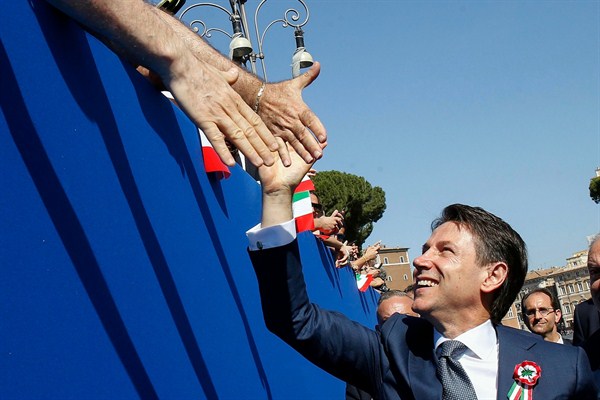Italy’s government crisis did its best to disprove the economist Herbert Stein’s axiom that “if something cannot go on forever, it will stop.” But 89 days after Italians voted on March 4, the crisis finally succumbed. A government drawn from Italy’s two leading populist parties—the anti-establishment Five Star Movement, or M5S, and the anti-immigration Lega, or League—was accepted by President Sergio Mattarella on May 31. The premiership will be entrusted to a law professor with no previous political experience, Giuseppe Conte, and several other technocrats will occupy key ministries.
Political upheaval is notoriously part of the ritual of governance in Italy. Every now and then, however, a systemic crisis erupts. In the early 1990s, the so-called First Republic, long dominated by the Christian Democrats and the Communists, noisily fell apart as a result of investigations into widespread corruption. What is happening now is the dissolution of the “Second Republic” that emerged after 1992, as another new political party landscape takes shape. There are good reasons for thinking that the end of the Second Republic might have even more sobering results for Italy and for Europe.
The March elections were technically “won” by a right-wing coalition composed of Silvio Berlusconi’s Forza Italia, the nationalist Brothers of Italy party, and the Lega, led by Matteo Salvini. The coalition got 37 percent of the vote and won most of the directly elected constituencies in northern Italy. The Lega was the largest party of the coalition, with nearly 18 percent of the vote, which enabled Salvini to supersede Berlusconi as the leader of the right and to be the coalition’s candidate for prime minister. This was important because the Lega leader was able to veto any suggestion of a governing coalition with the Democratic Party, or PD, in power since 2013 but battered at the polls. Berlusconi probably would have preferred this option, but he did not have the numbers to enforce his will.

